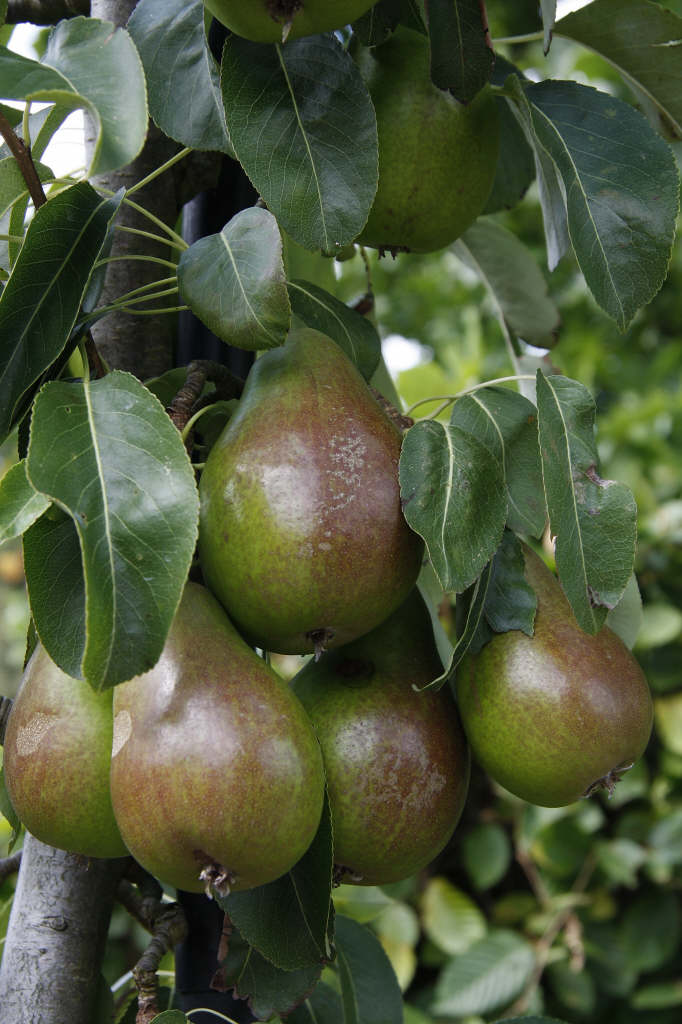Pyrus communis 'Louise Bonne of Jersey' (D)
pear 'Louise Bonne of Jersey'
A richly flavoured, buttery and juicy dessert pear. It produces good, regular crops with a season of use from October to November. A hardy tree, the blossom shows some resistance to frost, but is susceptible to scab. Pollination group 2

Buy this plant
Size
Ultimate height
4–8 metresTime to ultimate height
5–10 yearsUltimate spread
4–8 metresGrowing conditions
Moisture
Moist but well–drained, Well–drainedpH
Acid, NeutralColour & scent
| Stem | Flower | Foliage | Fruit | |
| Spring | White | Green | ||
|---|---|---|---|---|
| Summer | Green | |||
| Autumn | Green Red | |||
| Winter |
Position
- Full sun
Aspect
South–facing or West–facing
Exposure
Sheltered Hardiness
H6Botanical details
- Family
- Rosaceae
- Native to GB / Ireland
- No
- Foliage
- Deciduous
- Habit
- Bushy
- Genus
Pyrus are deciduous trees or shrubs with oval leaves and scented white flowers in spring, followed by green or brown fruits, edible in some species
- Name status
Accepted
How to grow
Cultivation
Grow pears in any well-drained, fairly moisture retentive soil. The ideal pH is 6.5. Incorporate plenty of organic matter on thin soils. Choose a sheltered position in full sun. Needs another cultivar for pollination; it's not compatible with 'William's Bon Chretien'. Keep a weed free area of 60cm radius around the trunk. Thin fruit if necessary
Propagation
Propagate by grafting or chip budding onto a rootstock for fruit. Quince rootstocks are usually used
Suggested planting locations and garden types
- Wildlife gardens
- Cottage and informal garden
- City and courtyard gardens
- Edible fruit
- Wall side borders
Pruning
Regular pruning required; This cultivar is a tip bearer. so is not suitable for growing as cordons, espaliers and other restricted forms. Grow as standards or spindlebushes. For further guidance see: pruning new pear trees, summer pear pruning, winter pear pruning, renovating pear trees
Pests
May be susceptible to aphids, caterpillars, codling moth, pear blister mite, pear midge and pear and cherry slugworm
Diseases
May be susceptible to blossom wilt, brown rot, fireblight, pear scab, European pear rust and honey fungus (rarely)
Get involved
The Royal Horticultural Society is the UK’s leading gardening charity. We aim to enrich everyone’s life through plants, and make the UK a greener and more beautiful place.